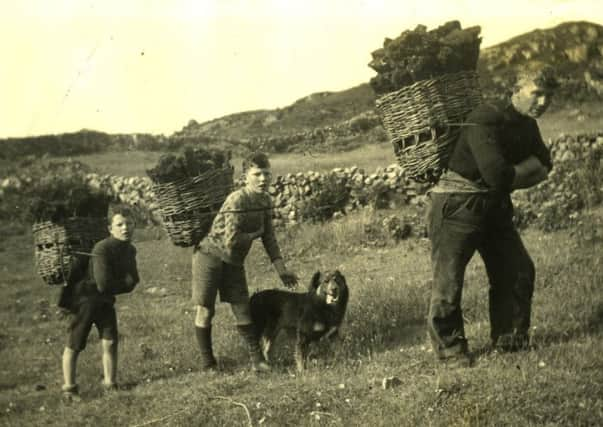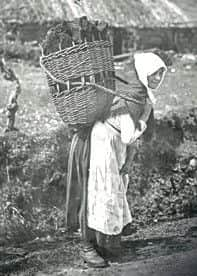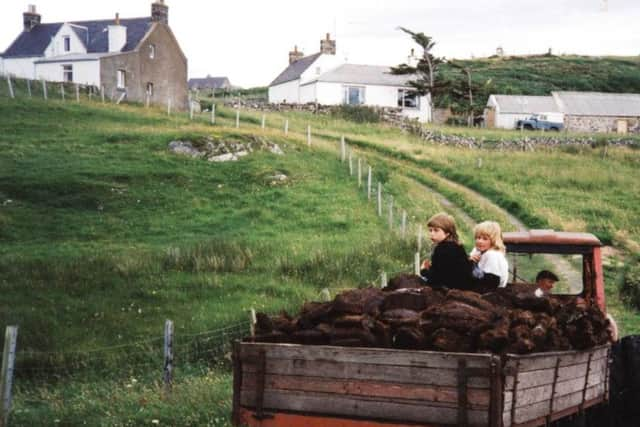Peat: the past and future of a Highland lifeline


Cooking, heating and hot water was dependant on the fuel, particularly in those areas where trees struggled to grow in a harsh climate.
And with crofters typically getting access to a peat bank as part of their tenancy, it was the only fuel of choice for many.


Advertisement
Hide AdAdvertisement
Hide Ad“The only extra cost of peat was the backbreaking work required to remove it from the ground,” said Rosemary Macintosh, of Strathnaver Museum at Bettyhill near Thurso.
A new exhibition at the museum looks at the importance of peat to communities over time - and how its role as an essential tool of survival has evolved.
Ms Macintosh added: “Back in the day, peat was vital - it was the source of everything, your heating, your cooking and your hot water.
“Your peat bank was really your lifeline. We are looking at the history of peat but also its future given its environmental importance - it is quite a product.”


Peat, which is decomposed plant matter formed over thousands of years, is now recognised as a major combattant against climate change.
With its abilities to store vast quantities of carbon, major work is ongoing to restore much of Scotland’s peatlands, which cover 20 per cent of the landmass, an area the size of Wales.
Millions of pounds of public money is being spent on preserving the ground that supports a myriad of flowers, beasties and birds.


Advertisement
Hide AdAdvertisement
Hide AdWood and coal came into Caithness and Sutherland around 1900 but, with trees planted on landowner’s ground, the new fuel had to be paid for. Coal would generally be bought by hotels and sporting lodges with crofters continuing to rely on peat.
Three tools have been traditionally used to cut peat: a rutting spade to mark the ground, a flauchter to remove the turf and a tusker to cut the fuel.
The deeper the digging, the darker the peat - and the hotter it will burn.
Cut peats are left to dry, probably for up to three weeks depending on the weather, and then would be arranged in the “first lifting”.


Creels, usually made of willow with a strap of heather, or horses would traditionally be used to take the peat home.
It could take two weeks to move a household’s annual supply of the peat in this way. This was cut to two days following the arrival of lorries in the 1920s.
Ms Macintosh said there was still a “community spirit” to be found on the peat hill with people lending a hand to prepare the fuel.
Advertisement
Hide AdAdvertisement
Hide AdShe added: “Collecting the peat wasn’t just a male job, women and children would be involved to. I remember as a child standing the peat blocks up to dry.
“Usually the man of the house would build the peat stack which was a type of igloo with the best peat, the driest and the hottest burning, protected by the more spongy larger piece of turf.
“Great pride was taken in building a good peat stack and for many this became a bit of a fine art.”
She said she knew of around a dozen people in her area who still burnt peat to heat their homes.
Ms Macintosh added that new arrivals in the north were often drawn to the novelty of the traditional heat source.
“It gives of a very particular type of smoke and it is hard to describe the smell but you know when someone is burning peat. It like Marmite, you either love it or hate it,” she added.
Strathnaver Museum sits in The Flow Country, the largest expanse of blanket bog in Europe that covers around 1,500 square miles.
Advertisement
Hide AdAdvertisement
Hide AdThe area was badly damaged in the 1980s through vast, fast commercial tree planting that was driven by government tax breaks.
Much work has been done to restore the peatlands, with the RSPB creating the Forsinard nature reserve to revert young woodland to peat bog.
According to Scottish Natural Heritage, peat soils in Scotland contain almost 25 times as much carbon as all other plant life in the UK.
The carbon stored in Scotland’s soils is equivalent to over 180 years of greenhouse gas emissions from Scotland at current emission rates.
As well as keeping carbon locked in, peatlands continue to absorb and store more. Degraded bogs emit carbon dioxide and other greenhouse gasses.
At least £8 million will be spent on restoring peatlands in Scotland in 2017/2018 given their importance in tackling climate change.